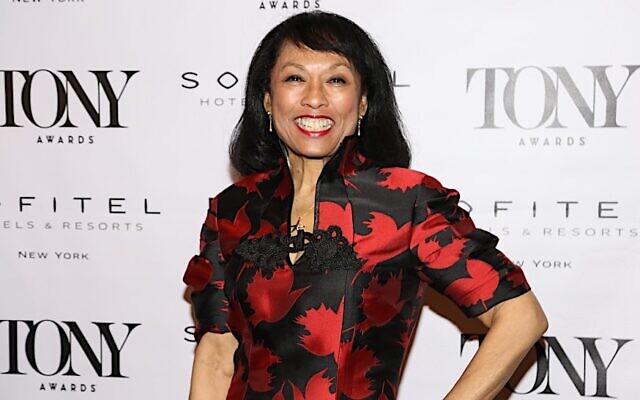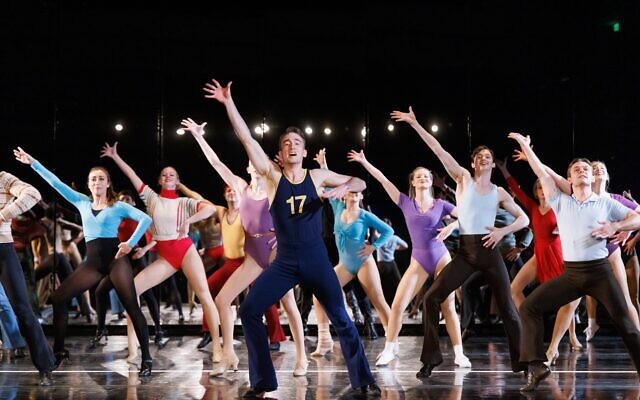City Springs Theatre Company Revives ‘A Chorus Line’
‘A Chorus Line,’ one of the most popular shows in Broadway history, runs through March 27 at the Sandy Springs Performing Arts Center.
Over 46 years after it first opened off-Broadway at New York’s Public Theater, “A Chorus Line,” whose revival debuted at the Sandy Springs Performing Arts Center on March 11, has lost none of its power.
The production, by the City Springs Theatre Company in Sandy Springs, tells the story of 17 dancers auditioning on a bare theater stage for a role in a new Broadway musical. As the show progresses and about half of the hopeful performers fall by the wayside, we get a close-up look at the experiences that have shaped their lives, hopes and dreams as performers.
One of the original cast members, Tony Award-winner Baayork Lee, has directed and choreographed this production based on the work of Bob Avian, who helped to create the original dance numbers in 1975.

“Forty-six years later and the stories being told are still relevant today,” Lee says. “People weren’t working and needed to find jobs 46 years ago and now we have the last two years when actors were out of work due to the pandemic. The challenges and struggles that actors go through to get a job, process their childhood and find love are all still relevant today, just as they were then.”
Lee, who played Connie Wong in the original production, has created over 35 productions of the show around the world and is following up the Atlanta staging with one in Pittsburgh this July. The seventy-five-year-old director last worked with the City Springs Theatre Company on a production of “South Pacific” in 2019.

For the Sandy Springs production she has cast Sarah Bowden in the key role of Cassie, an aging featured performer who’s been reduced to auditioning for a role in the chorus line. Bowden last worked with Lee in a 2016 production at the Hollywood Bowl. Bowden’s singing and dancing in one of the show’s best-known numbers, “The Music and The Mirror,” is a highlight.
So is Johnny Duvelson’s take on Ritchie Walter, the lone African American character in the cast. His dancing exudes a self-assurance and professional poise that gives a real edge to his performance.
“A Chorus Line” is a distinct change of pace for the Sandy Springs theatrical troupe, which has built a large and loyal following of season ticket holders with lavish stagings of the Broadway classics. According to the company’s executive director, Natalie DeLancey, this production takes it back to the basics.
“There aren’t huge sets,” she says. “There aren’t glamorous costumes. The show is really a behind-the-scenes look into an actor’s life. And the audition really turns into something quite different for them because the choreographer and director want to know about them as people. And so it turns into the cast sharing a lot of really personal stories about their lives, about their childhood, about who they are today.”
The original production by the original director and choreographer, Michael Bennett, took shape over a two-year period. Bennett, whose mother was Jewish, worked with Nicholas Dante and James Kirkwood to create a narrative structure in which most of the conflict emerged not from the plot but from the actual words that the dancers had spoken about their lives.
The show’s only Jewish character, a gay man who goes by the stage name Gregory Garner, introduces himself in the script as Sidney Kenneth Bechenstein. He points out that he has the Hebrew name of Rochmel Lev ben Yaakov Mayer and admits that his adopted name is “very East Side and I don’t deny it.”

At the time, a show without stars, with a skeletal story line and no sets or costumes to speak of was shunned by Broadway theater owners and investors. It was Joseph Papp, born Yussel Papirofsky to immigrant Jewish parents from Eastern Europe, who became the driving force behind the production. His theater invested $100,000 into the show and a woman named LuEsther Mertz, heiress to a fortune from Publishers Clearing House, put in $25,000 to get the show into off-Broadway previews.
After the first performance on April 16, 1975, the initial audience of 299 paying customers went wild. The production went on to run for 15 years on Broadway, racking up 6,137 performances and becoming, for its time, the longest-running musical in Broadway history. According to its producers, the musical grossed $277 million. It was also nominated for 12 Tony Awards, winning nine, including two for Bennett for direction and choreography. The show was also awarded a Pulitzer Prize for Drama.
Bennett was said to have demanded 15 percent of the show’s profits and 5 percent of the weekly box office. According to Riedel, the deal made him the richest director in the history of Broadway.
- Arts
- culture
- Local
- Bob Bahr
- City Springs Theatre Company
- broadway
- off-Broadway
- New York Public Theater
- A Chorus Line
- Sandy Springs Performing Arts Center
- Baayork Lee
- Tony Award
- Bob Avian
- South Pacific
- Sarah Bowden
- Johnny Duvelson
- Ritchie Walter
- Natalie DeLancey
- Michael Bennet
- Nicholas Dante
- James Kirkwood
- Gregory Garner
- Sidney Kenneth Bechenstein




comments